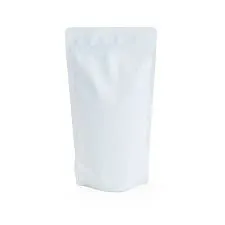- Afrikaans
- Albanian
- Amharic
- Arabic
- Armenian
- Azerbaijani
- Basque
- Belarusian
- Bengali
- Bosnian
- Bulgarian
- Catalan
- Cebuano
- chinese_simplified
- chinese_traditional
- Corsican
- Croatian
- Czech
- Danish
- Dutch
- English
- Esperanto
- Estonian
- Finnish
- French
- Frisian
- Galician
- Georgian
- German
- Greek
- Gujarati
- haitian_creole
- hausa
- hawaiian
- Hebrew
- Hindi
- Miao
- Hungarian
- Icelandic
- igbo
- Indonesian
- irish
- Italian
- Japanese
- Javanese
- Kannada
- kazakh
- Khmer
- Rwandese
- Korean
- Kurdish
- Kyrgyz
- Lao
- Latin
- Latvian
- Lithuanian
- Luxembourgish
- Macedonian
- Malgashi
- Malay
- Malayalam
- Maltese
- Maori
- Marathi
- Mongolian
- Myanmar
- Nepali
- Norwegian
- Norwegian
- Occitan
- Pashto
- Persian
- Polish
- Portuguese
- Punjabi
- Romanian
- Russian
- Samoan
- scottish-gaelic
- Serbian
- Sesotho
- Shona
- Sindhi
- Sinhala
- Slovak
- Slovenian
- Somali
- Spanish
- Sundanese
- Swahili
- Swedish
- Tagalog
- Tajik
- Tamil
- Tatar
- Telugu
- Thai
- Turkish
- Turkmen
- Ukrainian
- Urdu
- Uighur
- Uzbek
- Vietnamese
- Welsh
- Bantu
- Yiddish
- Yoruba
- Zulu
define corrugated boxes
Understanding Corrugated Boxes Definition, Features, and Applications
Corrugated boxes, a staple in the packaging industry, are primarily recognized for their durability, lightweight design, and versatility. Made from a fluted corrugated sheet sandwiched between two flat linerboards, these boxes are engineered to withstand external pressures and provide superior protection for a wide array of products during shipping and storage.
Definition and Structure
At its core, a corrugated box is defined by its unique construction. The three layers—the outer liners and the inner fluted medium—combine to create a structural component that is both robust and lightweight. The outer liner is typically made from recycled paper and serves as the primary barrier against moisture and dirt. The fluted medium provides insulation and cushioning, making corrugated boxes highly resistant to bending and crushing forces.
The flute comes in various sizes, designated as A, B, C, E, and F flutes, each offering different levels of thickness and cushioning capability. For instance, C-flute is one of the most common types, providing an excellent balance between strength and weight. A-flute is thicker and offers superior cushioning, making it ideal for fragile items, while E-flute is thinner and better suited for retail packaging and smaller items.
Advantages of Corrugated Boxes
One of the primary advantages of corrugated boxes is their environmental friendliness. Being made from a renewable resource—paper—these boxes are recyclable and biodegrade quickly, making them a popular choice among eco-conscious businesses. Many manufacturers also use recycled materials in their production, thereby minimizing waste and energy consumption.
In addition to their sustainable nature, corrugated boxes provide excellent protection for goods in transit. Their sturdy construction helps shield products from external impacts, moisture, and dust, making them ideal for shipping fragile items such as electronics, glassware, and perishables. The customizability of corrugated boxes further enhances their appeal; businesses can use different sizes, shapes, and printing options to ensure that their branding is consistent while also meeting specific packaging needs.
define corrugated boxes

Moreover, corrugated boxes are lightweight, which translates to lower shipping costs. The reduced weight means that businesses can maximize their shipping efficiency while also minimizing their carbon footprint. This is particularly relevant in a world increasingly focused on sustainability and reducing greenhouse gas emissions.
Applications in Various Industries
The versatility of corrugated boxes allows them to be used across a multitude of industries. In retail, they are commonly employed for packaging consumer goods, ranging from food items to clothing. Their ability to be printed on and designed with appealing graphics makes them excellent for attracting customers while also ensuring product safety.
In the manufacturing sector, corrugated boxes are favored for warehousing and transportation of raw materials and finished products alike. Their strength and durability make them a practical choice for moving heavy machinery parts, automotive components, and bulk items.
Furthermore, in the food industry, corrugated boxes are used extensively to package and ship fruits, vegetables, and meat products. The breathable nature of certain types of corrugated boxes helps in maintaining the freshness of perishable items during their journey from farms to supermarkets.
Conclusion
In summary, corrugated boxes represent a crucial element in modern packaging solutions. Their unique structure, strength, and environmentally friendly attributes make them a preferred choice across various industries. With ongoing advancements in manufacturing processes and increasing emphasis on sustainability, the role of corrugated boxes is likely to expand even further. Businesses looking for effective, safe, and green packaging solutions will continue to recognize the essential benefits and applications of corrugated boxes in their operations. Whether for shipping, retail, or storage, these boxes are undoubtedly a vital part of the supply chain and will remain integral in the years to come.













